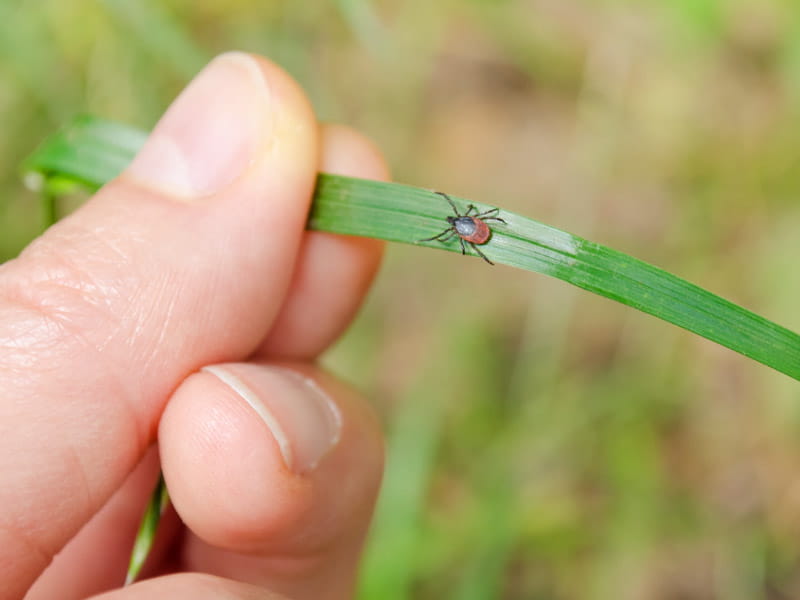Courtesy of the American Heart Association
Warmer weather is the perfect time to enjoy nature, but for those who work in the garden or walk along wooded or grassy trails, it also means greater exposure to an insect you can barely see that causes Lyme disease – ticks. Lyme disease affects at least 470,000 people per year in the United States. Certain ticks carry the bacteria that causes the disease, and are most abundant in the Northeast, parts of the Midwest, and some Pacific coast states.
In addition to Lyme’s hallmark “bull’s-eye” rash, other symptoms may include fever, chills, headache, fatigue, muscle and joint aches, swollen lymph nodes, and a heart problem called Lyme carditis. Left untreated, Lyme infections can spread to the nervous system. Lyme carditis is serious but rare, and occurs in roughly 1 in 100 reported cases each year. When bacteria from the infection enters the heart, it causes inflammation and interferes with electrical signals going from the heart’s upper to lower chambers, causing an irregular heartbeat known as heart block. Heart block can be mild or severe and cause chest pain, according to Dr. Richard Shen, an infectious disease specialist at Southcoast Health in Massachusetts. Heart block can be difficult to notice and resolve on its own, but in rare instances, can be fatal if untreated.
Lyme carditis can cause lightheadedness, fainting, shortness of breath, heart palpitations, or chest pain. Diagnosing it first requires a blood test to detect Lyme disease and then an electrocardiogram to detect Lyme carditis. Typical treatment for Lyme carditis is a three-week course of oral or intravenous antibiotics and, sometimes, a temporary pacemaker. “The type of treatment depends on the severity of the symptoms,” says Dr. Kevin Shah, director of the cardiovascular intensive care unit at the University of Utah in Salt Lake City.
Shah says the best way to prevent Lyme carditis or Lyme disease is staying away from places where ticks are abundant, noting that those who work outdoors face a higher risk of exposure.
Dogs also are susceptible to tick bites and can carry them into the home, so check them for ticks around the tail, ears, collar, between legs, and toes after being outdoors. Check with your veterinarian regarding recommended tick prevention products.
To prevent tick bites to people, the Infectious Disease Society of America, American Academy of Neurology, and American College of Rheumatology recommend insect repellants containing DEET, permethrin, or lemon eucalyptus oil. If a tick attaches to skin, don’t try to burn it off or use chemicals or petroleum products to remove it. Instead, remove it with clean, fine-tipped tweezers.
Finding a tick on your skin – even if it’s already bitten you – does not mean you will automatically get Lyme disease. The disease requires the tick to bite on the person for a day or two before it can transmit, so perform tick checks daily after being outside, and pick them off. “If you can do that before they stay on too long, you should be able to avoid Lyme disease pretty well,” says Shah.












